How to reuse plastic bottles in a garden – 7 quick DIY projects that actually work
From milk jug watering cans to soda bottle seed storage, these plastic bottle hacks turn trash into treasured tools
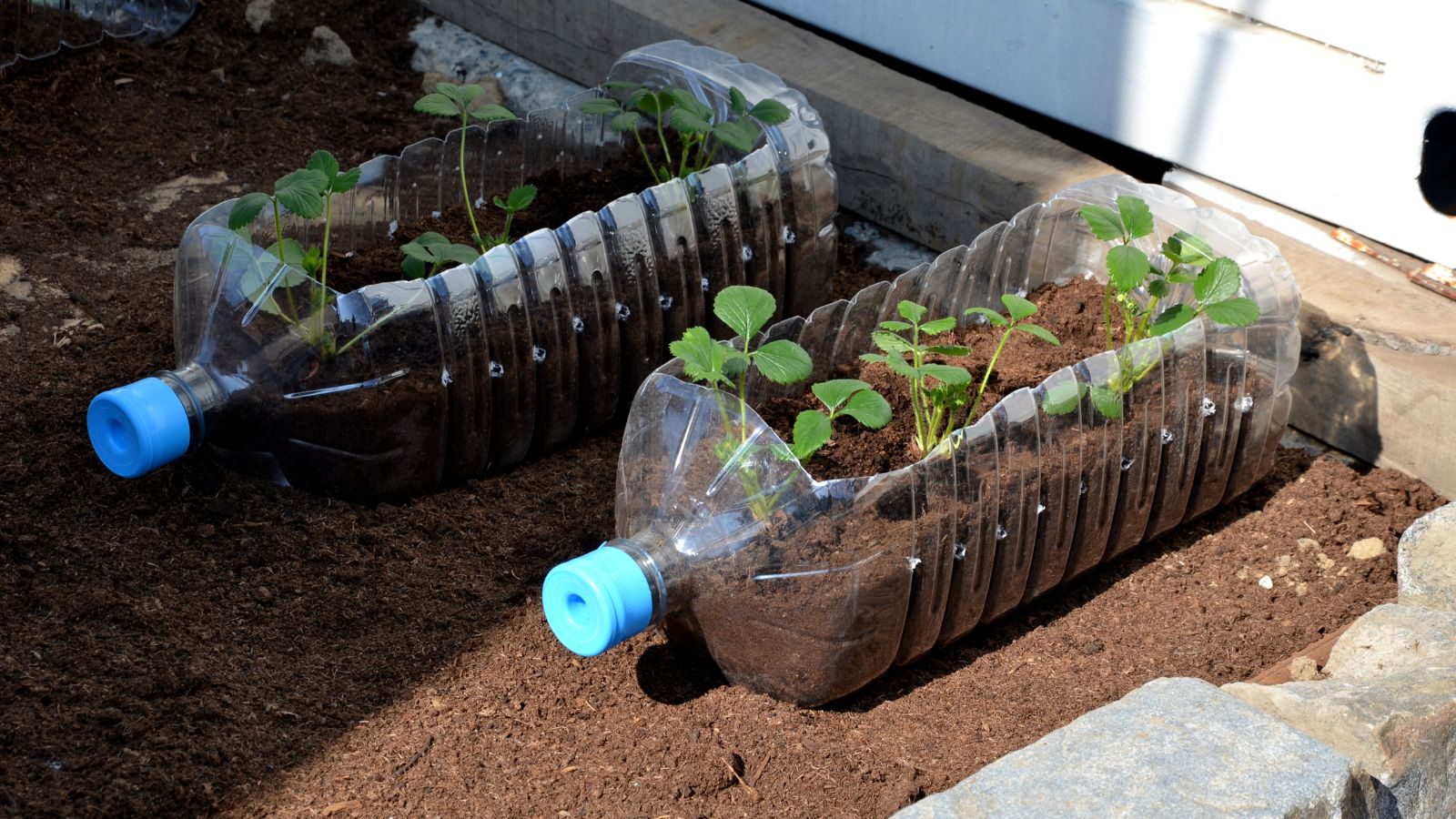

Every one of us creates huge amounts of plastic waste. Whether from soda bottles, water bottles, or milk jugs, plastic bottles account for a huge amount of household waste.
However, you needn't despair about the amount of plastic winding up in landfills. You can reuse old plastic bottles out in the yard to help you grow plants, fruits, and vegetables.
I spoke to a professional gardener about how to reuse old bottles as handy tools around the garden. The only drawback? You have to be mindful of introducing microplastics to your yard.
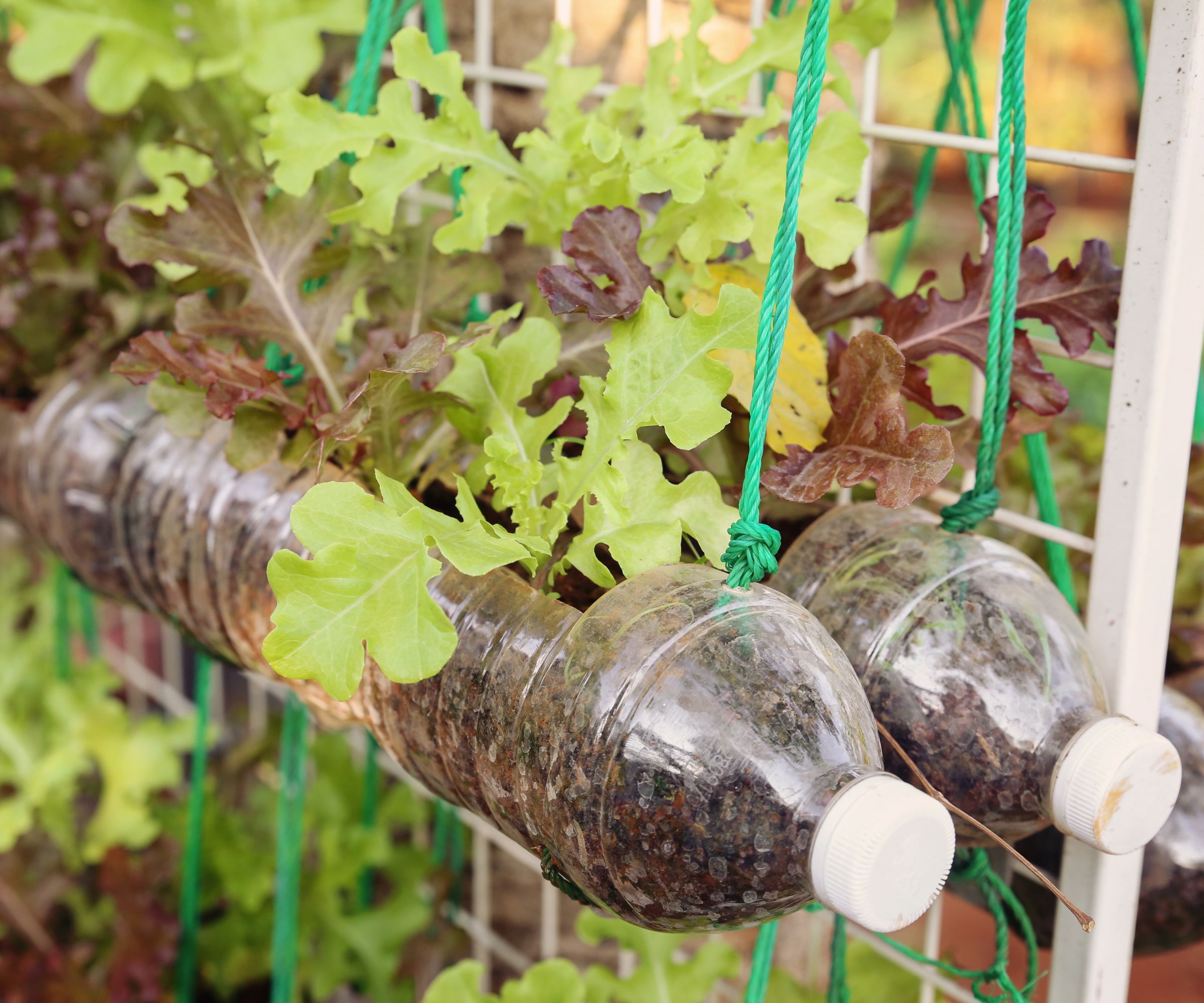
Before we get into our ideas, be aware of microplastics
Consider microplastics before reusing plastic in your yard. Microplastics are tiny pieces of plastic that can contaminate the soil, your plants, and if you grow vegetables, your food. The most common plastics in bottles, PET (such as in soda bottles) and HDPE (such as in milk jugs) can both leach microplastics.
Gardener Jeff Ellis explains that 'Microplastics can be introduced to the environment when you reuse plastic water bottles. They're caused by abrasions when the bottle is open and closed, as well as any wear and tear it goes through in the garden. Similarly, prolonged exposure to sunlight and heat can cause the bottle to start breaking down faster, which can also release microplastics.'
This is riskiest when growing vegetables. These tiny plastics could end up in the vegetables you grow, and when you eat them, you could ingest microplastics, though this is relatively unlikely. It's less of a danger with ornamental plants. Microplastics won't harm you if they end up in your roses.
However, these plastics can harm the plant. On top of that it can be hard to restore soil once contaminated with these tiny pieces of plastic. Whether or not the risks are worth it is up to you. Reusing plastic bottles for a season is unlikely to hugely impact your soil, but the effect can compound over time.

Jeff Ellis is a highly experienced Landscape Gardener with over 10 years of hands-on expertise in transforming outdoor spaces. Qualified with an RHS Level 3 Diploma in Horticulture, Jeff possesses an in-depth knowledge of plants, including their care, selection, and suitability for diverse environments.
1. Turn soda bottles into planters
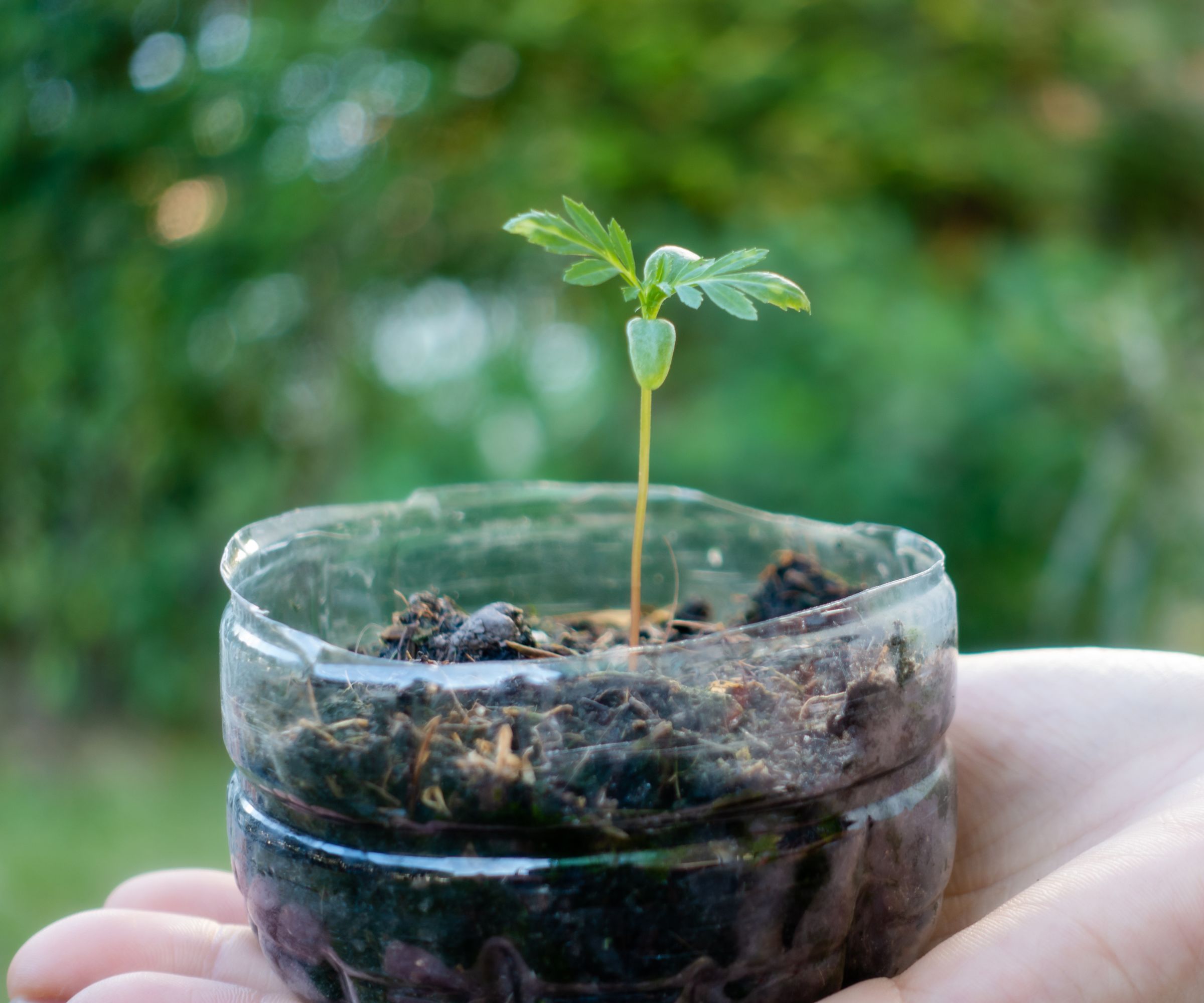
One of the most common ways to reuse old soda bottles in the garden is to use them as planters. It's easy to DIY - just cut a 2-liter bottle in half, make some drainage holes in the bottom half with scissors or a craft knife like this from Walmart, and you have a fast DIY planter.
You don't have to cut it horizontally, either. Jeff Ellis says 'You can cut it in half horizontally for a small, personal planter, or you can make a vertical cut for something longer that you can easily mount on the wall, and that option often looks great with a coat of paint.'
Jeff suggests this method is particularly useful in kitchen gardens. He says ' I really like putting herbs in my bottle planters, but flowers can also do well in them.'
2. Make huge seed trays
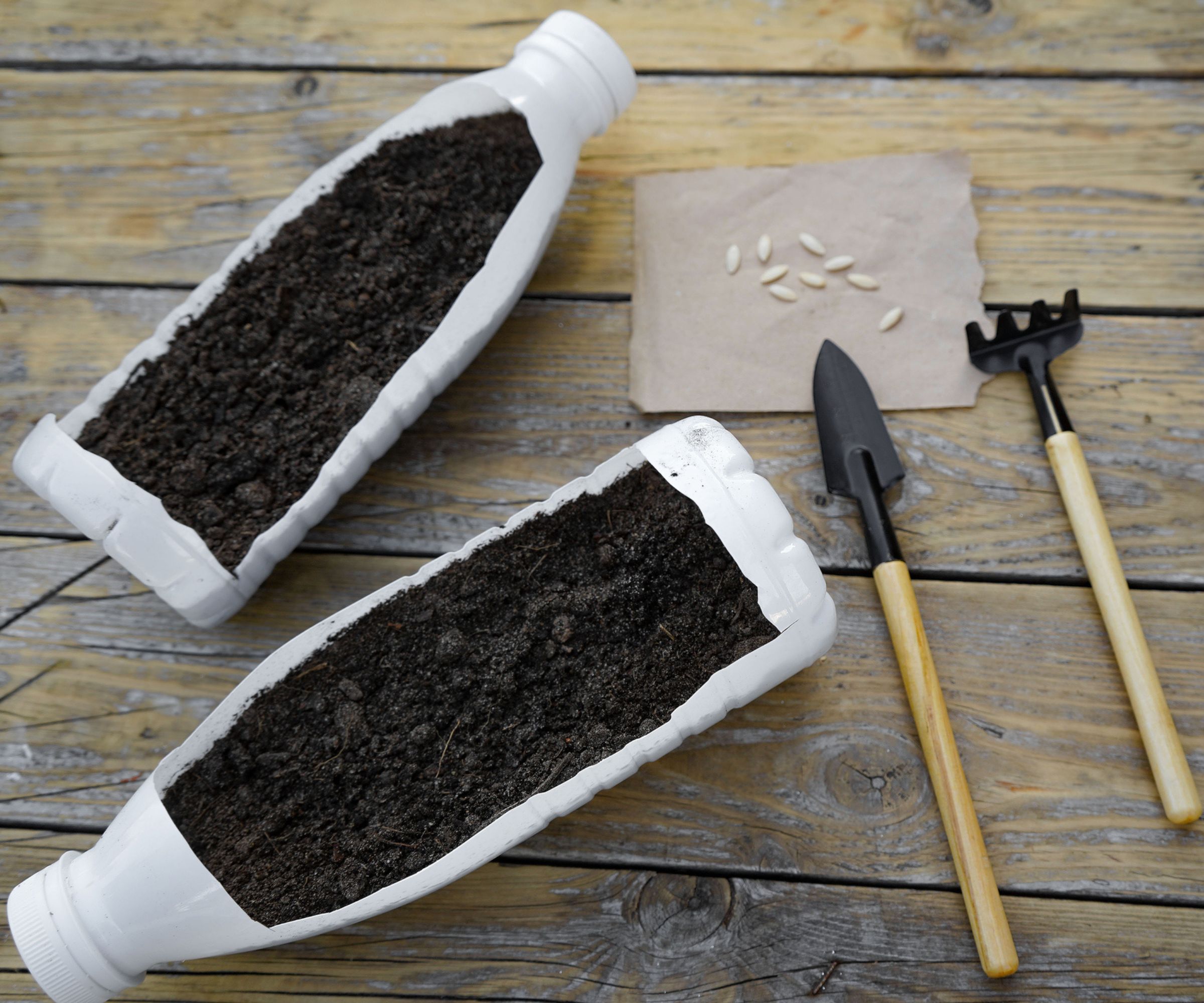
Cutting bottles horizontally also makes good seed trays. This is a great method because it limits microplastic exposure; once your seeds are ready to prick out you can transfer them to plastic-free terracotta pots.
Jeff Ellis says 'Plastic bottles can make great seed trays because they’re good at retaining moisture and maintaining a higher level of humidity that prevents the seeds from drying out. The warmer temperature inside the bottle can help speed up the germination process and get your seeds started so you can transfer them to their pots when they’re ready. Just remember to clean the bottles thoroughly before you use them.'
The method is the same as the planter method above. Cut a 2-liter soda bottle in half vertically and fill both halves with soil to make two large seed trays.
3. Create protective cloches
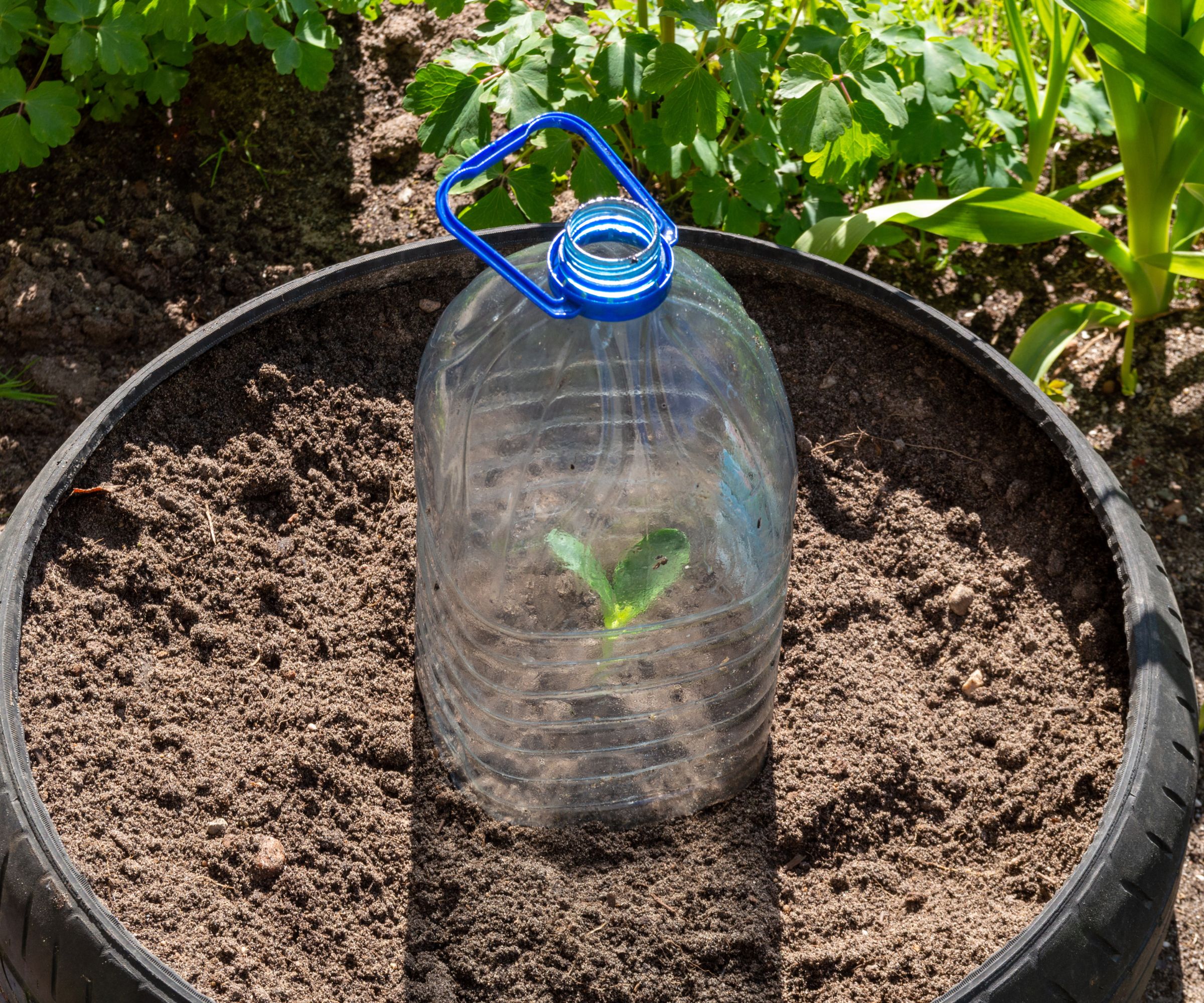
Another way to reuse plastic bottles is to turn them into cloches. A cloche is a cover for plants during winter frosts. Traditionally made of expensive glass, even modern plastic cloches like these at Target are expensive for what they are. However, you can get the same effect by cutting a plastic bottle in half.
Jeff Ellis explains that 'Plastic bottle cloches are basically like miniature greenhouses that can protect your young plants and seedlings from harsh weather conditions like frost. It’s best to use one of the 2-liter bottles for this because you get more sunlight.'
This method is particularly effective because it allows you to control airflow. Jeff says, 'All you need to do is cut off the bottom and place the top over the plant. Keep the cap off during the day to prevent the plant from overheating, and then put it back on at night to retain heat. It’s good for those cold snaps that often kill seedlings, and it also helps delicate plants that struggle during the early spring.'
4. Make milk jug watering cans
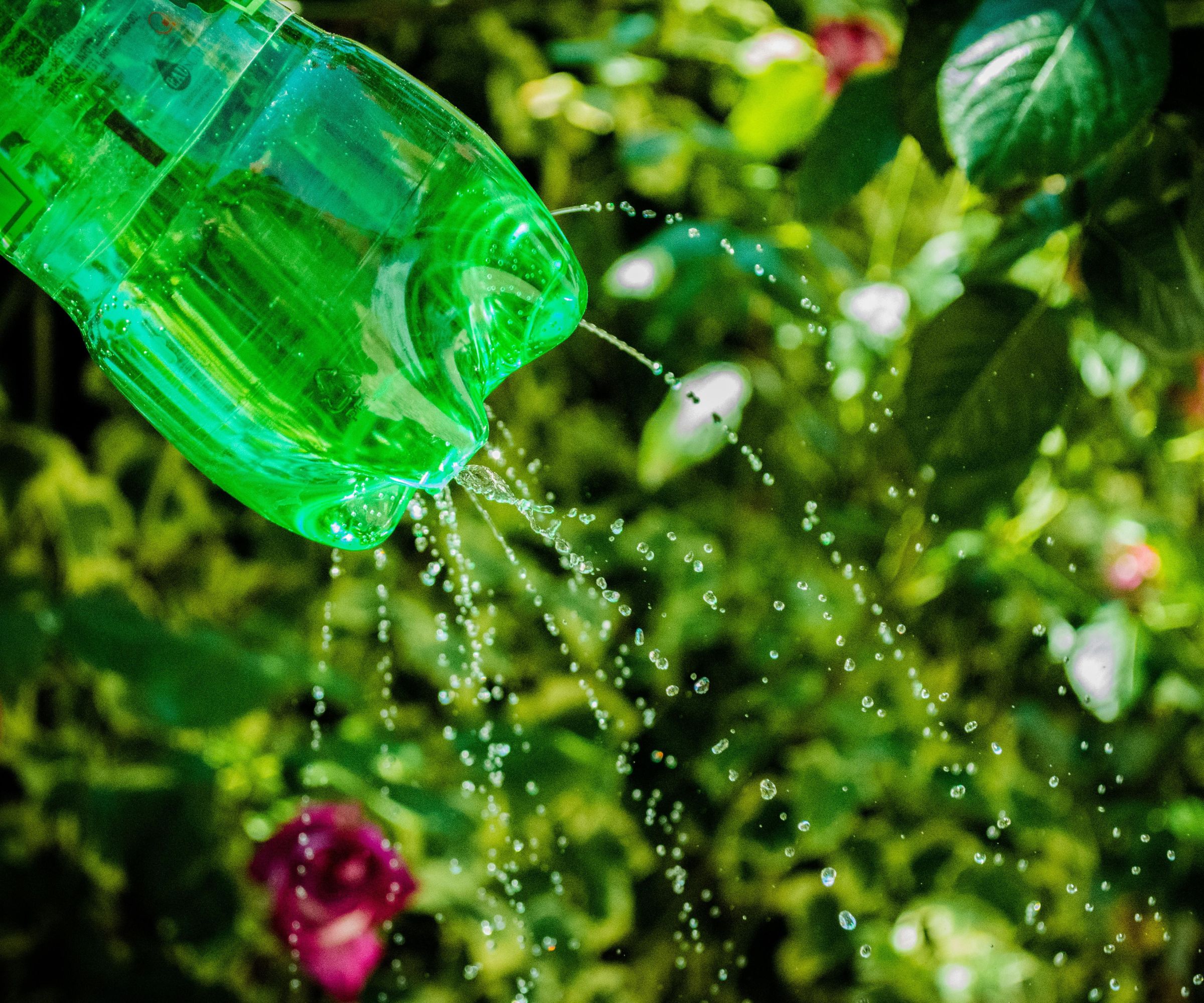
You can turn old bottles into watering cans, too. Old milk jugs are particularly great for this because they have a handle to make them easier to pour.
Jeff Ellis explains that 'You can use plastic milk bottles as watering cans, and they do a good job. You need to make sure you rinse the bottle out thoroughly before you use it and then make holes in the lid. You can use nails for larger holes and push pins for smaller ones - it all depends on how big you want the spray to be. For the best results and a smooth flow of water, you should make the holes from the inside out.'
You can also create misters for more delicate watering. Take a smaller 16.90z soda bottle and prick the bottom with a pin. These tiny holes create a slower, gentler mist that's perfect for seedlings or tropical plants.
5. Create seed and dry fertilizer spreaders
You don't just have to use bottles for watering, too. You can also use them to spread seeds and fertilizer, and it's even easier to do. Rather than poking holes in the bottle lid, cover half of the open neck with tape. This limits the flow of the seeds or dry fertilizer but still lets them get through.
Gardener Jeff Ellis says 'Plastic water bottles do work well as seed and fertilizer spreaders. You can add a mesh if you want to control the flow of seeds coming through, but it works well even without it. All you need to do is shake to release the seeds.'
6. Use bottles as seed storage
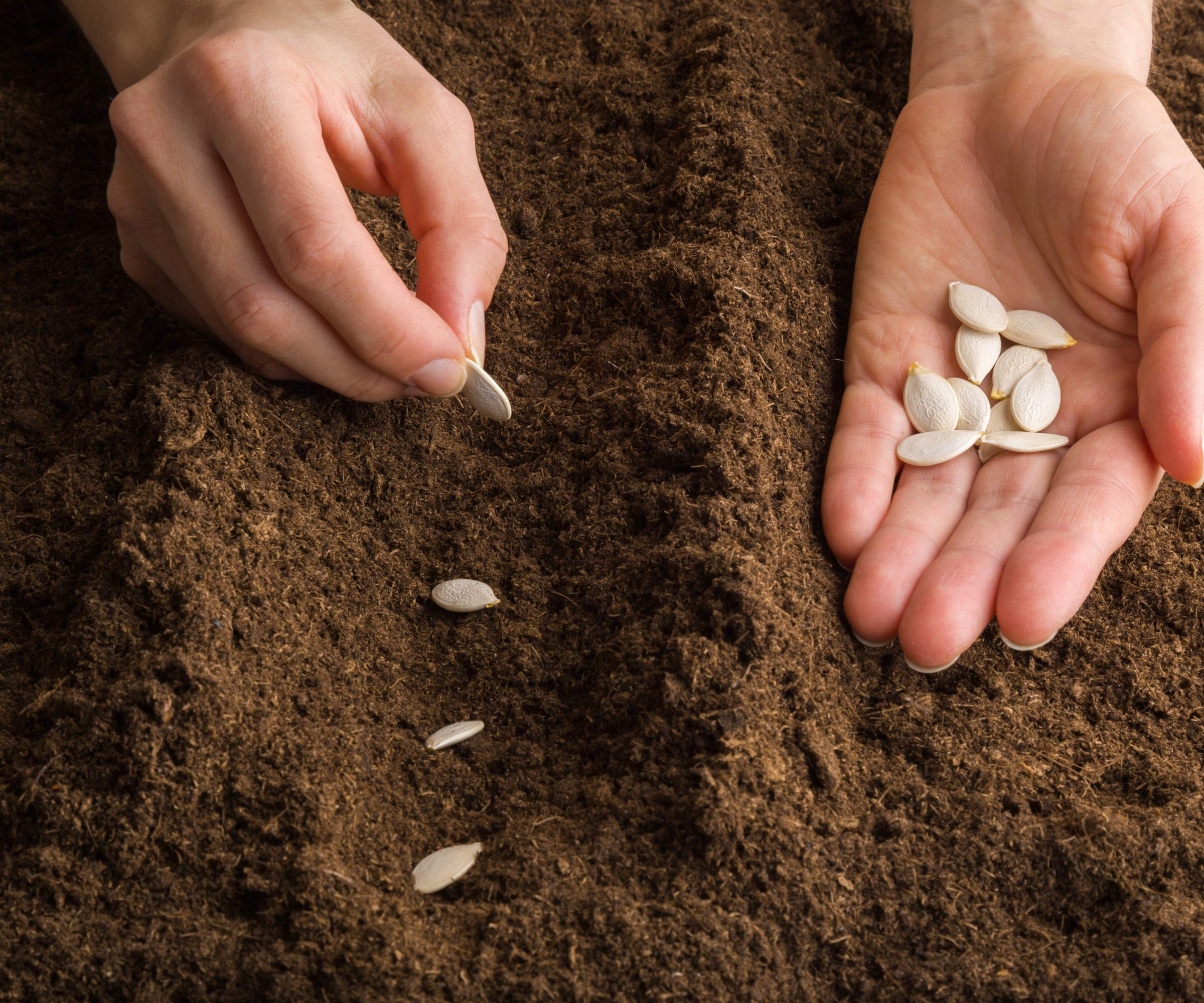
Small plastic soda bottles can be perfect for seed storage, because you can screw the cap closed to keep it airtight. However, you need to be careful.
Jeff Ellis warns that 'The seeds and the bottle must be completely dry with no trace of water. The bottle also needs to be airtight, and you have to store the seeds in a cool, dry place.
However, Jeff has a great homespun tip for keeping your seeds dry so they don't germinate. 'The best way to ensure seeds always remain dry is to add a desiccant to the bottle to help absorb any moisture inside. A small piece of white rice wrapped in tissue paper is actually a great natural desiccant if you need it.'
7. Make a watering globe
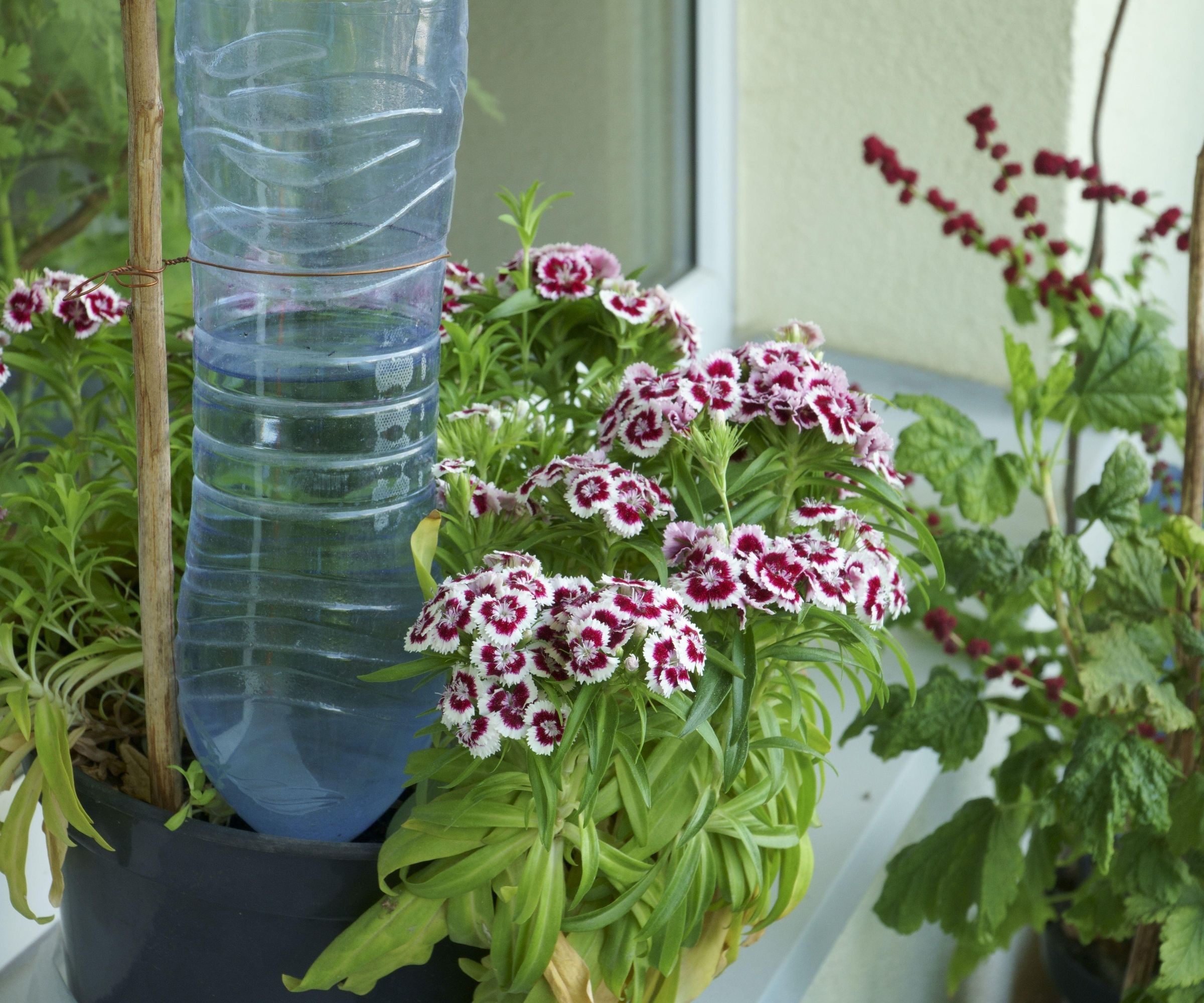
Finally, you can turn old plastic bottles into watering globes. Water globes are self-watering systems for plants. They're useful when you go out of town because they keep plants topped up with water when you aren't around to keep an eye on them.
Jeff says 'You can make a good and effective plastic watering globe, and it doesn’t take too much work. I recommend anything up to 20oz (the closer, the better), and you’ll need to heat a nail with a candle or a flame before using it to make a hole in the cap of the bottle.'
This will make a perfect homemade watering globe, and it's easy to use, too. Jeff says 'All you need to do is fill the bottle with water and some liquid fertilizer if you think it’s needed before putting the cap back on and putting it top first into the soil by the plant’s root ball. Always make sure the soil is saturated before you insert the globe, as this ensures a good fit and water distribution.'
FAQs
Should you wipe down plastic before using it in the garden?
You should always wipe down plastic before using it a garden. The first reason is to brush off any microplastics that might be present in the plastic. The second is to remove food waste like milk or soda that could encourage fungal infections that harm your plants. It also prevents food waste from making bad smells.
Plastic bottles aren't the only way to reuse waste in a backyard. There are a host of ways to repurpose a leaky yard hose as a soaker hose or as grips for a bucket, and you can also reuse old clothes as horticultural fleece or plant ties. As ever, just be careful about introducing microplastics into your yard from synthetic fibres in sportswear.
Sign up to the Homes & Gardens newsletter
Design expertise in your inbox – from inspiring decorating ideas and beautiful celebrity homes to practical gardening advice and shopping round-ups.

As a gardens and lifestyle contributor, Alex makes sure readers find the right information to help them make the best purchase. Alex got his start in reviewing at the iconic Good Housekeeping Institute, testing a wide range of household products and appliances. He then moved to BBC Gardeners’ World Magazine, assessing gardening tools, machinery, and wildlife products.
You must confirm your public display name before commenting
Please logout and then login again, you will then be prompted to enter your display name.
-
 The instinct-based Toddler Decluttering Method will reduce clutter by half in seconds – and it's not for children
The instinct-based Toddler Decluttering Method will reduce clutter by half in seconds – and it's not for childrenIt's a simple but effective method to cull clutter quickly in your home
By Ciéra Cree
-
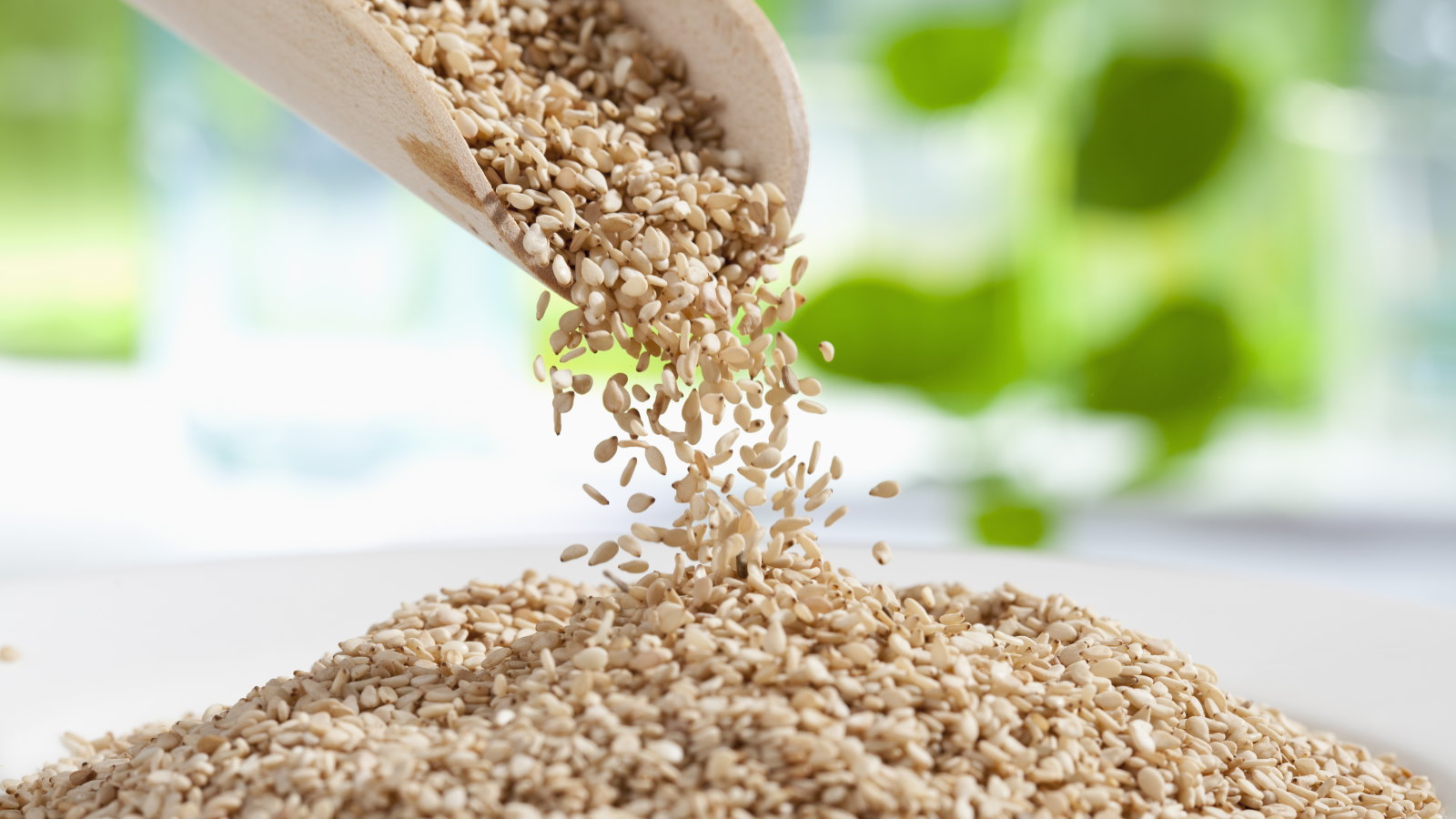 How to grow sesame plants and harvest nutrient-rich seeds for snacking, cooking, or baking
How to grow sesame plants and harvest nutrient-rich seeds for snacking, cooking, or bakingSesame plants are easy to grow, provided you have a warm climate
By Drew Swainston